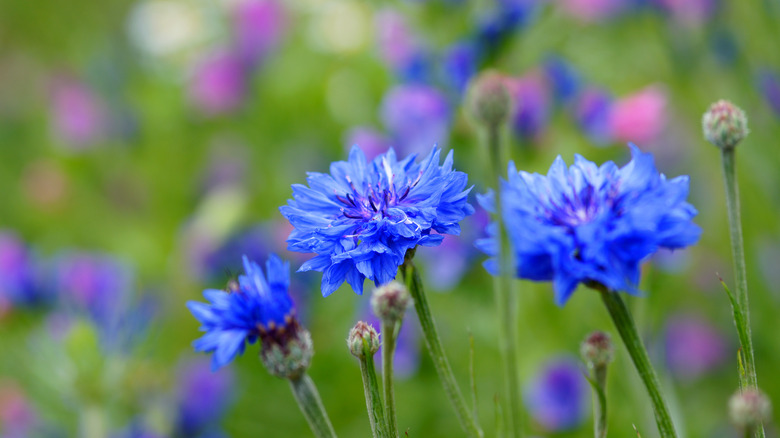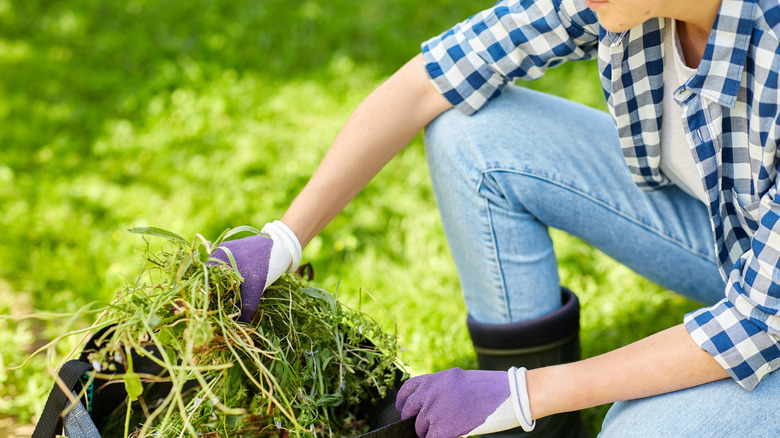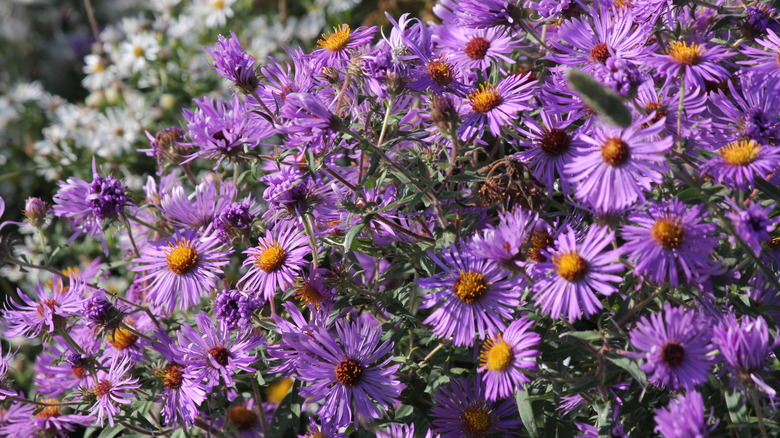The Beautiful Blue Cornflower Variety You'll Regret Planting In Your Garden
Staying vigilant about invasive species in a given area is one of the most important responsibilities of any gardener. Invasive plant species can crowd out native plants crucial to local ecosystems, causing widespread damage to plant and animal life in the area. While beautiful, blue cornflower (Centaurea cyanus) is considered invasive in the United States. Their flowers produce large volumes of seeds that then spread and overtake grasslands.
Blue cornflower, also called bachelor's button or bluebottle, can grow up to three feet tall and features vibrant blue flowers, which is the key reason why many gardeners have made the mistake of adding it to their landscape. The plant is native to Europe and spreads especially easily in fields, making it a disturbance to crops and native plants. The seeds can spread via wind or in contaminated soil, and unfortunately, they are often included in "wildflower mix" seed packets. It will come back year after year and is not overly picky about soil and moisture, which helps it spread even more easily. It usually grows in full sun or partial shade.
What to do about blue cornflower in your garden
Sometimes, gardens with invasive plants are inherited in a home purchase, and other times, gardeners with the best intentions still introduce an invasive species to their area. Especially due to its prevalence in wildflower seed mixes, it's all too easy to plant the invasive blue cornflower by mistake. Identify these flowers by their pom-pom shape, gray-green and loosely hairy stems, and bell-shaped marginal flowers. If you discover this vibrant but overbearing flower in your garden, there are a few key steps to take.
The best way to prevent blue cornflower from spreading is to pull each stem by hand, trying to get the full root in the process. Doing so as soon as possible after you identify the plant is best so that the seed-filled blooms don't have the chance to scatter on the winds and take over the nearest field. Deadheading will also prevent self-seeding. Especially if you remove the plants after they've flowered, be careful not to let the flowers end up in your compost or throughout your garden. Instead, put them in a bag and remove them from your home completely.
What to plant instead
Fortunately, plenty of alternatives to blue cornflower look just as beautiful without threatening local ecosystems. If you're searching for stunning blue flowers you should grow in your garden, options abound. Opt for the unique nigella for one of the easiest and fastest-growing flowers, or plant showy hydrangeas or other flowering shrubs.
If the height of the blue cornflower was your main draw, why not replace it with a relative in the daisy family like the New England Aster? This perennial can grow up to 6 feet tall, grows well from seed, and provides lovely pinkish-purple blooms that butterflies love. It can tolerate clay soil and is hardy in USDA zones four through eight.
Finally, if you were leaning toward a wildflower mix because you want to benefit and attract bees and pollinators in your area, you might have some homework on your hands. Before selecting a wildflower mix, confirm that it doesn't include blue cornflower or any other invasive species. To be safe, you could also create your own wildflower seed mix with hand-selected seeds native to your specific location. After all, these are the plants your local birds and insects need most!


